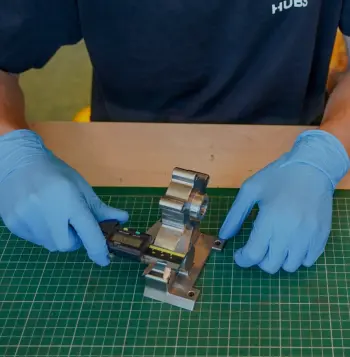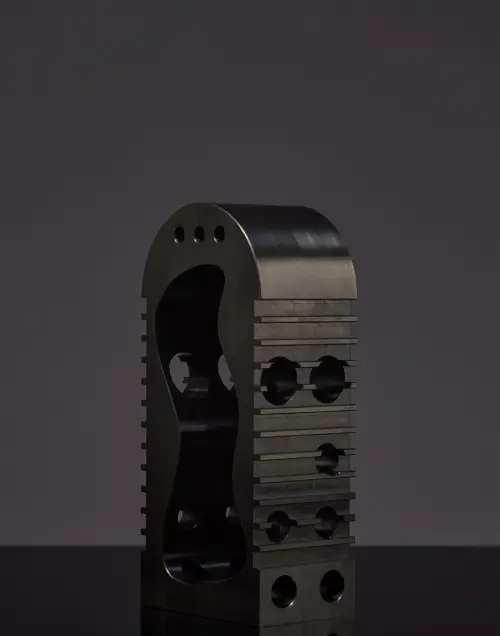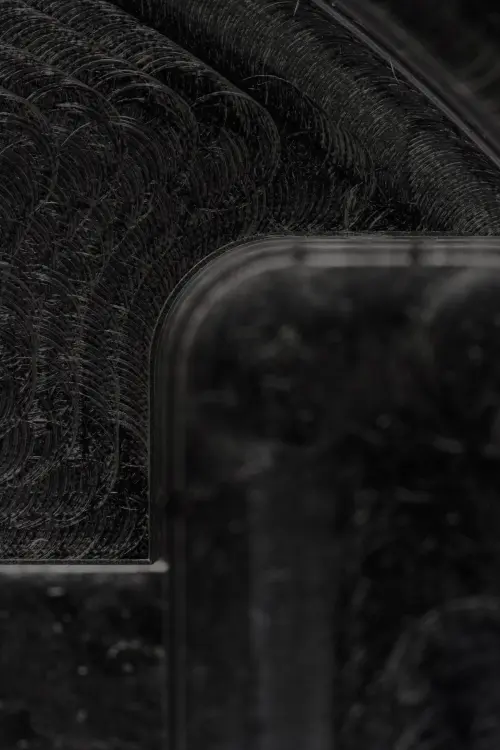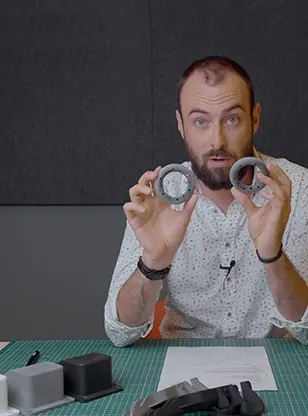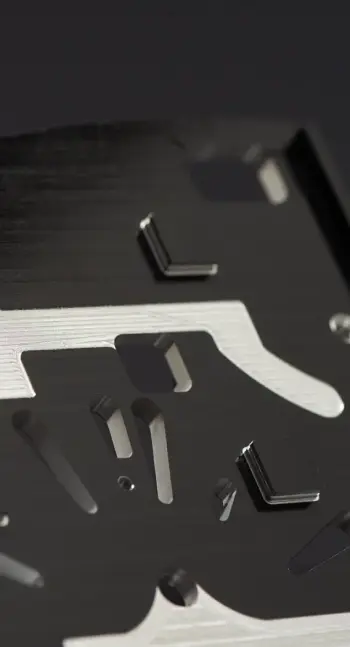Brushed + Electropolished (Ra0.8µm, 32µin)
Electropolishing gives parts a shinier appearance and makes them easier to clean and more resistant to corrosion. It also deburrs the surface roughness of stainless steel on a microscopic level (up to 10µm).
| Requirement | Specification |
|---|---|
| Surface preparation | Brushed |
| Color | Natural metal color |
| Part masking | Indicate masking requirements in technical drawing |
| Cosmetic availability | Cosmetic by default |
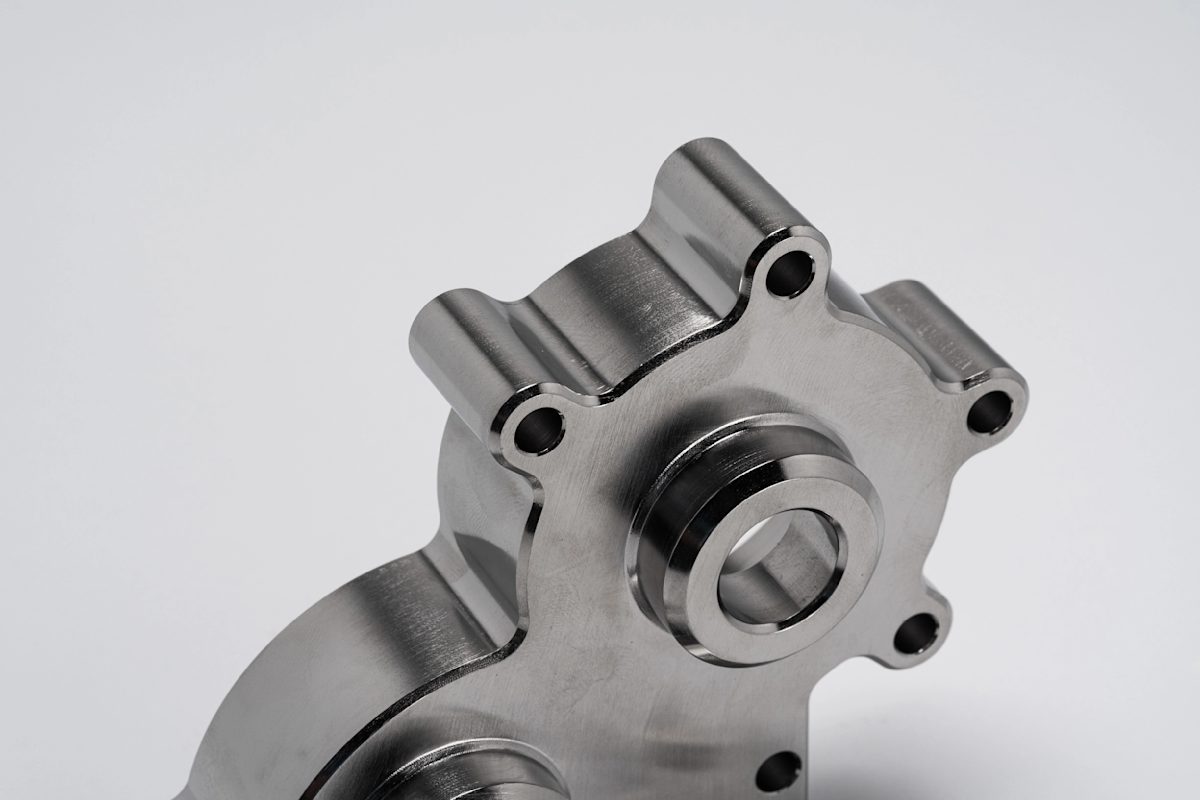
Example of a brushed + electropolished part


The Protolabs Network brushing + electropolishing process
Here’s how to apply brushing and electropolishing:
The part’s surface is cleaned and prepared by power brushing
The metal part being electropolished (aka anode) is connected to the positive terminal of a direct current (DC) rectifier and submerged in a tank of an electrolyte solution. The negative terminal of the rectifier is connected to a cathode (usually stainless steel) that is also submerged in the tank
A current runs through the solution from the anode to the cathode, causing ions on the surface of the material to oxidize and dissolve into the solution
Parts are then rinsed from the electrolyte solution in a different tank
To finalize the finish, parts go through a final post-dip in a Nitric dip or a Citric acid, rinsed with cold water and are put to dry

Put your brushed + electropolished parts into production today
Get instant quote